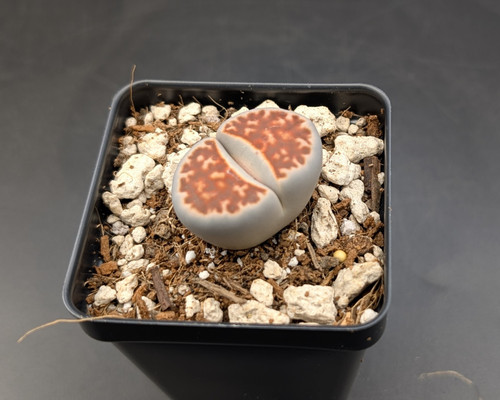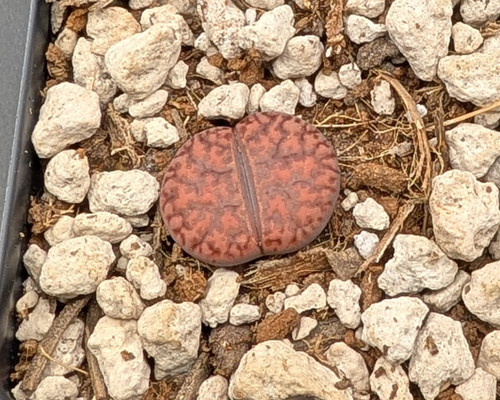Pack Size: 10, 20, 100, 300
Year: 2025
Accepted Scientific Name: Dioscorea elephantipes var. montana
Origin and Habitat:
Dioscorea elephantipes var. montana is native to the semi-arid interior regions of South Africa, particularly the mountainous areas of the Western and Eastern Cape. It thrives in rocky, well-drained habitats where the caudex is partly buried among stones, providing protection from herbivores and intense sunlight. Rainfall in its native range is seasonal, mostly during cooler months, encouraging a natural cycle of winter growth and summer dormancy. This adaptation allows the plant to endure extreme drought and temperature fluctuations while maintaining its distinctive woody caudex for decades.
Description:
This variety forms a rounded caudex that can reach 12–18 inches across with age, patterned with angular, tessellated plates resembling a turtle shell. From the caudex, twining vines emerge during the active growing season, reaching several feet in length. Leaves are heart-shaped, thin, and green, contrasting with the woody caudex. Small, inconspicuous, star-shaped flowers appear on the vines, ranging from pale greenish-yellow to cream, with male and female flowers borne on separate plants.
Cultivation:
Zone: Suitable for USDA Zones 9–11.
Temperature: Prefers 15–27°C during growth; tolerates down to 5°C when dormant.
Growth Rate: Slow, with caudex enlarging over decades.
Soil: Requires a sharply draining soil with pumice for aeration and moisture control.
Watering: Water moderately during active vine growth, allowing soil to dry between waterings. Keep nearly dry in dormancy.
Fertilizing: Apply diluted balanced fertilizer every 2–3 weeks during growth.
Light: Bright light to full sun for caudex development; protect vines from scorching.
Pests and Diseases: Generally resistant but may be affected by mealybugs or root rot if overwatered.
Germination Info:
Temperature 27°C. Surface sown: No, seeds should be lightly covered.







